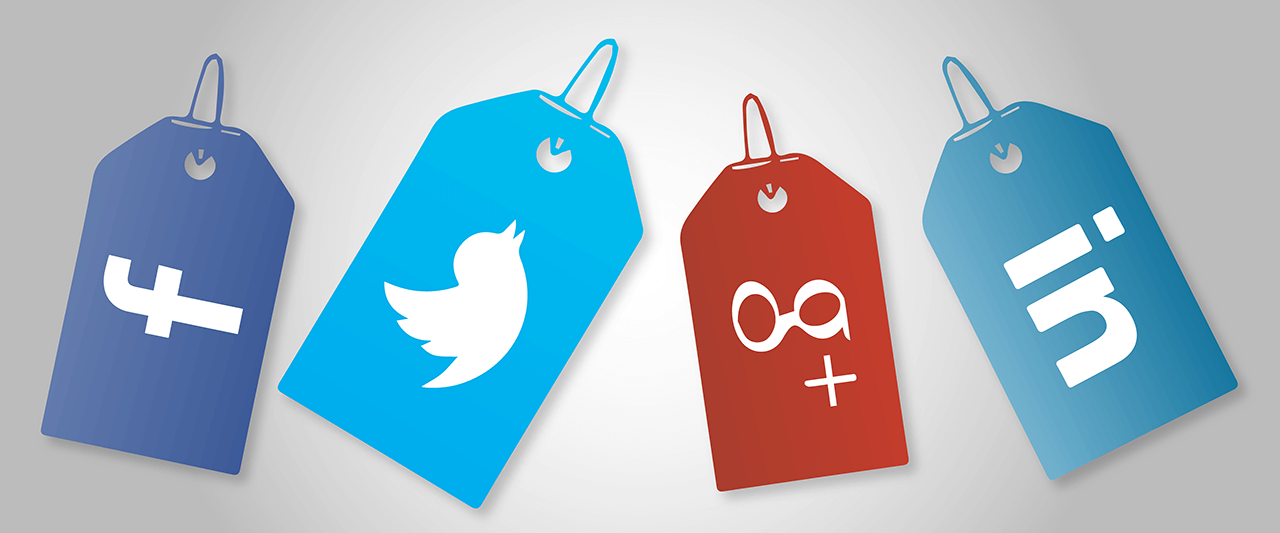-
Aug 21 2019 Setup Low-Cost Social Media Campaigns With These 7 Tips
Social media has many advantages for businesses of all sizes, such as –
- You can boost brand awareness at a low cost.
- You can improve traffic to your Website.
- You can offer better customer service.
- You can develop brand loyalty.
- You can gain more in-depth insight into your audience and the marketplace.
- And, you can establish brand credibility.
However, if you are a startup or a one-person-show (i.e. an artist, designer, freelancer), there’s a huge possibility that you might not have a fancy budget in place to make the most of social media’s benefits. Figuring out a posting schedule, obtaining nice artwork and planning an ad budget can be intimidating. That’s why we’ve compiled a list of seven tips to help you setup a low-cost social media campaign.
1. Start With An Editorial Calendar
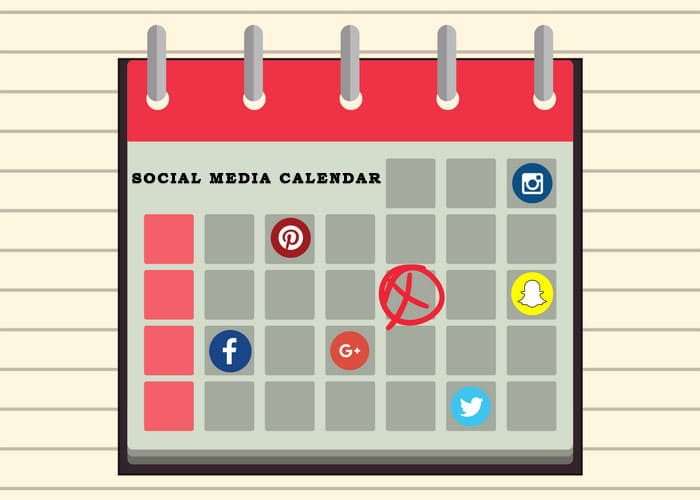
An editorial calendar will help you see how many posts you need each month, further segmented into different categories – i.e. testimonials, product shots, videos, contests, throwback/flashback posts, blog links, etc. This will be the most important step in keeping your social media campaigns low-cost – planning prevents unnecessary expenditure on unneeded posts and/or urgent last-minute creatives. Furthermore, it helps you pick which posts truly deserve a paid push-out.
2. Curate Your Content

Based on the editorial calendar you’ve formed, you can then figure out which creatives can be sourced for free through sites, such as Canva, Unsplash and Pixabay. And, you can also pin-point which creatives truly need a graphic designer to work their magic on. This will help you keep your graphic design budget to a bare minimum.
Many social media pros also emphasize the value of drawing user-generated content, too – not only do you engage with your audience base through this tactic, you also get free material. For example, you could run a contest that requires participants to take photos with your product(s) or send in a testimonial.
And, think of clever ways to repurpose existing content you have on file. Can you convert any blog posts into infographics? Can you present industry information out there in the public domain in a visually interesting way that’s easier to digest? Are there any user reviews/comments on your page you can convert to testimonials? Think, think, think!
Pro Tip – When working with graphic designers, create a mood board and detailed creative brief to minimize extra costs associated with too many revisions.
3. Tie-Up With Micro-Influencers

We’ve already looked at the benefits of working with micro-influencers in an earlier blog post. With a 7x higher engagement rate than bigger influencers, micro-influencers offer more value and sometimes even tie-up on a barter basis. Research ones suitable for your brand and collaborate!
4. Monitor Analytics

Low cost tools like Google Trends and Adwords will help you determine which content is performing best in the market, so you can make sure your social media content mix is offering audiences the right value. You can also track your Website’s analytics to see if your social media handles and ads are even redirecting customers to desired page(s).
Pro Tip – Try different content ideas and post timings to figure out what’s resonating the most with your TG.
5. Cross-Promote

This might seem fairly obvious, but you’d be surprised how often this gets overlooked. Make sure you add hyperlinked icons to your social media handles in emailers, official email signatures, your Website and whenever you guest post on other platforms, link back to your company’s social media handles, too. You might pick up more followers through this simple tip.
6. Use Ads Consistently

Simply putting great content out there doesn’t magically bring you thousands of followers. You need to invest in pushing content out so people know it actually exists. While you don’t need to spend big bucks on Facebook and Instagram ads, it is critical you chalk a small, but consistent budget to obtain more likes on your FB page and boost select posts throughout the month that are important. Learn to work your way around algorithms so your content is discovered all the time.
7. Less Is More
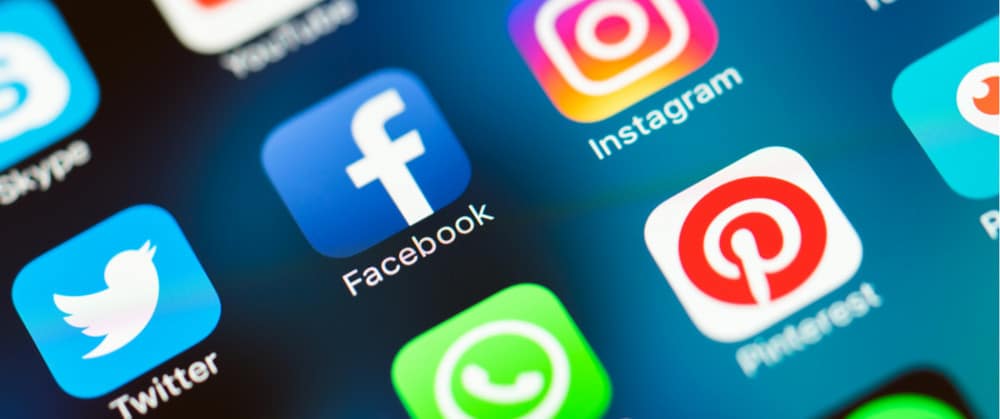
Lastly, be selective where you want to be. Rather than hopping onto any and every social media platform that exists, select 2-3 platforms at most that are genuinely relevant to your brand and dedicate your energy to them properly.
We hope these seven tips help you keep your costs low and campaign results high. If you need help with a social media strategy, contact Kiss Doodles right here.
Sources-
> https://neilpatel.com/blog/social-media-marketing-on-a-budget-the-4-step-approach-that-works/
> https://www.moovly.com/5-simple-low-cost-social-media-marketing-tips-for-small-businesses
> www.bluefountainmedia.com/blog/advantages-of-social-media-marketing -
Aug 02 2019 6 Tips To Score You FREE Influencer Marketing
Building a sizeable social media presence isn’t an easy process – it can take a long time and it can also be really costly. We’re pretty sure you must have heard of influencer marketing – the hottest marketing trend out there on the market right now – in fact, the influencer marketing industry is projected to touch 10 billion by 2020. Research indicates 49% consumers actually depend on recommendations from influencers, and campaigns conducted with influencers have a ROI of 6.50 for every dollar spent.
But, what if you don’t have the big bucks to tie-up with influencers? Well, that’s why we’ve decided to help you bag some FREE influencer marketing.
1. Go Micro, Not Macro

Rather than going after influencers who have hundreds of thousands of followers, opt for micro-influencers. Studies indicate micro-influencers have a nearly 7x higher engagement rate than bigger influencers. Furthermore, since micro-influencers engage in way fewer campaigns, 82% consumers have a higher chance of acting upon their recommendations. Often, a small freebie of your product(s)/service(s) are enough to have them on board, or a really small token amount will suffice.
2. Do Your Homework

If you have less followers than the influencers on your wish-list, spend some time brainstorming how you can offer them value. For example, can you give them business referrals? Can you spot issues on their Website (i.e. broken links)? Can you plug them for a feature story at a friend’s publication? Figure out what you can do for them before you ask them to do something for you!
3. Interact Selflessly
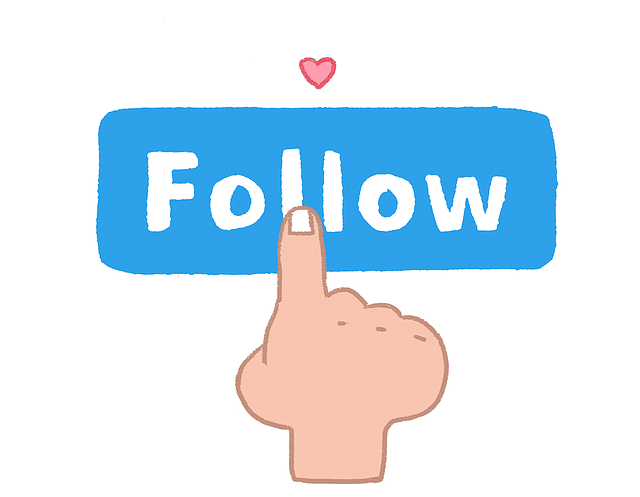
Follow. Subscribe. Like. Comment. Share. Shout-outs. Attending their events. Support causes they endorse. Praise for recent accomplishments. You get the point! Selflessly support influencers you have your eye on, so you can build a relationship, gradually. Remember, it takes time to nurture an equation like this if you’re not putting money on the table.
4. Send Them Freebies

Send a box of goodies from your product catalog, or offer a free service to influencers. If they really like it, they might just post about your brand on a day they don’t have any paid campaigns running.
5. Shine The Spotlight On Them

One of the best ways to get social media shout-outs from influencers is by featuring them in your platform. Interview them for your blog. Or, include them in a listicle of Top 10 Instagrammers Covering XYZ. Or, you can even ask them to guest post on your Website. If you promote them on your platform, they are likely to share the URL of their interview/article with their own following.
6. Be Better Than Your Competition

This goes without saying – always try your best to create content that’s more exciting and aesthetic than your competition (a social media competitor audit helps with this), and chances are influencers will feel more inclined to work with you.
We hope these 6 tips help you obtain free support from influencers. If you need help with putting together branding strategy and social media campaigns, contact our team right here!
Sources-
> www.jeffbullas.com/22-proven-tips-getting-attention-influencers/
> https://digitalmarketinginstitute.com/blog/20-influencer-marketing-statistics-that-will-surprise-you
> www.grin.co/blog/19-micro-influencer-statistics-you-must-know-in-2018 -
Jul 31 2019 Everything You Need To Know About Running Social Media Contests
There are plenty of brands vying for the attention of your particular target audience. So, how do you keep your existing followers hooked and also draw new customers to your page at the same time? Social media contests! However, not every social media contest is going to generate the same amount of brand engagement. Make the most of your resources with these seven tried and tested contest ideas that are bound to generate solid value for your company –
Why Run Contests
Running contests are helpful for a variety of reasons, including –
- It allows you to build a database of contacts to then engage through automated drip email campaigns and special promo offers
- It widens your reach to your followers’ network
- It provides you with user-generated content to repurpose in social media posts
- It enables you to generate hype surrounding your brand and/or a particular product/service
Contest Essentials

Before we get into the top ideas for running social media contests, let’s first look at six important pointers –
- Always give away something of value to your users so they actually feel motivated to participate
- Use a contest headline that is clear and catchy
- Make sure participation steps are not too complicated, else engagement will be low
- Boost contests through paid promotions (i.e. FB/Insta ads) so people actually know you’re running it
- Input all data you retrieve into a running Excel sheet to re-engage everyone with “thank you for participating” emails that offers a nice promo to lure them in for a purchase
- Consider using a branded hashtag unique for each contest to track entries smoothly and gauge contest success
Alrighty, let’s jump right into contest ideas now, shall we? –
Top Social Media Contest Ideas –
Idea 1 – Like & Comment To Win

One of the easiest social media contest methods, the “Like & Comment” tactic helps boost traction on your page immediately. And, since there are no other steps to required to enter, audiences are more likely to take part in your contest since it’s easy-breezy. The less complicated the action steps, the higher the number of entries!
Idea 2 – Event Tie Up

Tie your social media contest with a special event, cause or day to boost participation. Since people are already searching for trending event/special day hashtags, your contest is going to gain more eyeballs. If you make the stakes even higher with a much grander giveaway, you could possibly even do a PR campaign surrounding it for free media coverage.
For example, if you run a pizza shop, National Pizza Day is a great special day to tie your contest with and perhaps give 2-3 lucky winners a free pizza voucher and a chance to make the largest pizza in the city (the idea of the largest pizza in the city would appeal to local journalists + bloggers, too, since it is a feel-good, topical story!).
Idea 3 – Sharing Is Caring

If you want to tap into your followers’ following, the Reshare/Retweet/Repost contest tactic never fails. In fact, if you tell followers every re-share/re-tweet/repost counts as a separate entry (i.e. increased odds of winning), that’ll motivate them to spread the word about your contest on all of their social media handles. This is a no-brainer!
Idea 4 – Referrals

A variation of Idea #4, instead of asking entrants to reshare/repost-retweet, you can simply ask them to repost + tag their friends or to just tag their friends in the comments section below your original contest post. This doesn’t eat away from much of their time, and it gets the word out quickly about your brand!
Idea 5 – Rep Search

A lot of subscription boxes and publishing houses love this contest idea on social media. In essence, you’re getting free influencers through this method. Offer to select 3 “reps” for your brand who will receive a box of goodies for a set number of months (provided they share a certain number of social media posts about the goodies you send them). Tell people to upload an original collage of different images relevant to your brand and to tag your company in the post. Add a clause that whoever receives the most number of likes on their collage wins.
Idea 6 – Audience Inputs

People like to participate in a contest that’s fun. “Caption this” contests that award the most-liked witty comment are a handy idea for this very reason. You can also post a clever trivia question. Or, give your followers a chance to vote on new products/services – for example, if you run a cosmetics brand, you can ask your followers to pick between two new shade options or different name options.
Idea 7 – Endorsements

If you have a set of products (i.e notebooks, clothing, jewellery, tea/coffee), you can ask followers to send in a selfie with it and/or a testimonial video to enter in your contest. This will give you plenty of user-generated content to repurpose in the future.
We hope this post has you thinking about social media contest ideas you can start implementing in your own digital marketing plan! If you need any help, contact our team right here.
Sources –
> https://johnlincoln.marketing/drive-social-engagement-26-contest-ideas/
> https://blog.hootsuite.com/social-media-contest/
> www.socialmediaexaminer.com/4-tips-for-successful-social-media-contests/ -
Jul 29 2019 Does Your Social Media Editorial Calendar Check All These Boxes
A social media content calendar is a great tool because it –
* Allows you to brainstorm new ideas and assess what is / isn’t working
* Helps you plan your SM posts well in advance
* Prevents lags in posting consistency
* Ensures your design and copy teams provide everything in a timely fashion
* Assists with digital ad budgets
* Improves metrics / analysis at-a-glance
Let’s take a look at what elements should be a part of your social media editorial calendar (only use a spreadsheet for this!) so you can plan things more efficiently –
1) Dates
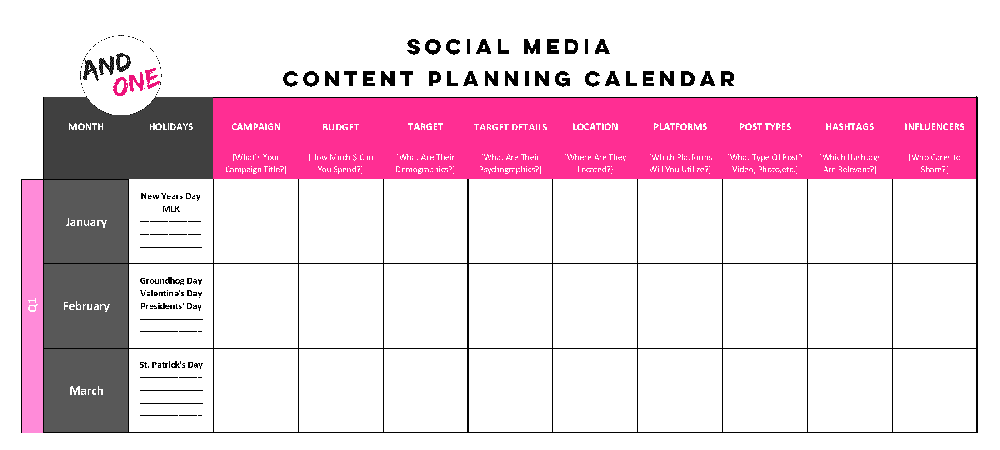
List out all the dates in the month so you can see which posts are going on what days and where the breaks are
2) Post Type
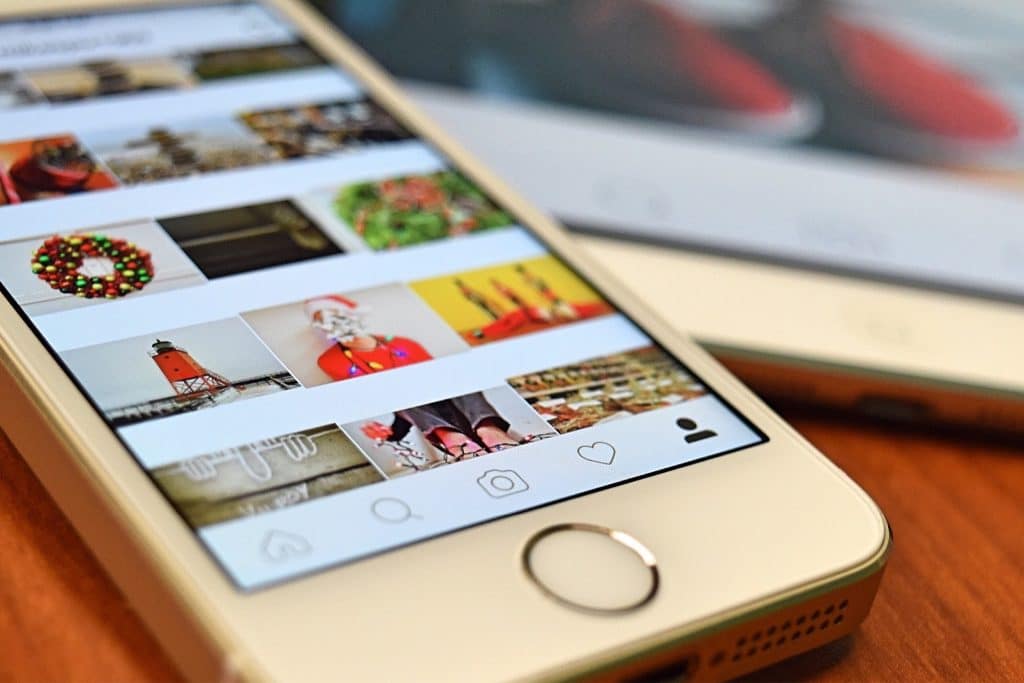
Enter a category for each post going up – i.e. photograph, video, throwback/flashback, testimonial, contest, motivational quote, infographic, etc. You can check if your content is varied enough or too tilted toward one direction (that would be monotonous)
3) Copy

Your copywriter(s) should enter the text for the graphics right here so your design team can copy + paste it easily
4) Caption
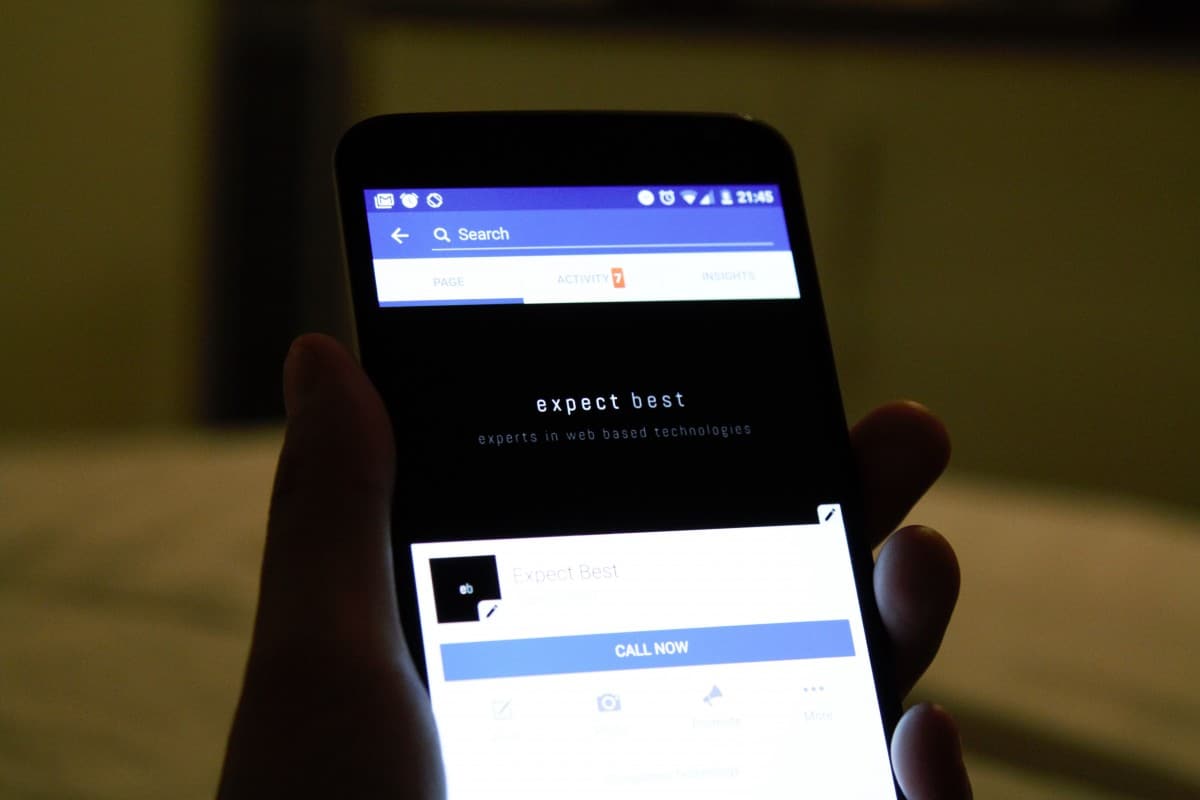
Your copywriter(s) should enter the caption accompanying the post when it goes up so your social media team can copy + paste it easily
5) Hashtags

Your social media team should plan out relevant hashtags per post in advance so they can copy + paste it easily
6) Platform

Specify if a post is going up on FB, Instagram, Twitter, LinkedIn, Google Plus, etc., so you can make sure all relevant platforms are receiving sufficient content that is varied (avoid duplicating posts across all platforms because that’s redundant for audiences)
7) Post Timing

Specify which posts should go up at what time based on insights you receive through analytics – this is especially important if you have multiple posts going out on the same day
8) Metrics
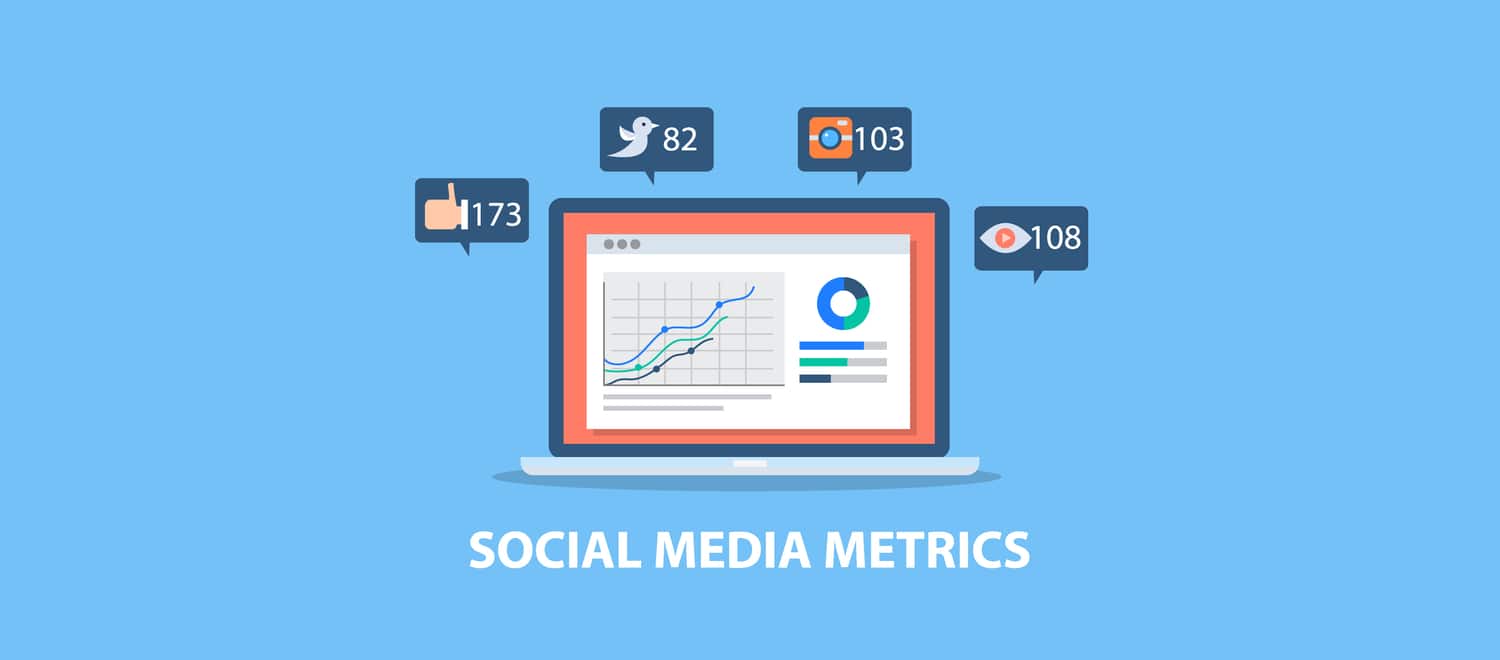
Input the number of likes/shares/comments/reshares each post is drawing to analyze what is / isn’t working
9) Point Person

Indicate point people for different tasks to guarantee accountability in case of errors / delays
10) Boost

Indicate which posts should be boosted through a paid promotion, and indicate for how much + demographics/filters
11) Images / Videos

Mention where all the files are saved so the social media manager handling your handles has access to everything they need for posts to go live
12) Status

Allow a section for notes regarding status – is the copy ready, is the graphic ready, has the post been scheduled, is the post live?
Pro Tips –
* Mention any special days that should be addressed – i.e. if you run a pizza specialty restaurant, you definitely wouldn’t want to miss National Pizza Day for social media posts and hashtags.
* Make sure you conduct a social media audit using these tips to build the most robust mix of content.
We hope these tips help you stay organized on all your social media initiatives so nothing slips through the cracks, which is a risk when operating with a haphazard workflow system. Do the due diligence of putting everything into a documented file all relevant parties can access in real-time and update!
Need help with social media content creation and planning? Contact Kiss Doodles right here.
Sources –
> https://blog.hootsuite.com/how-to-create-a-social-media-content-calendar/
> www.hatchbuck.com/blog/monthly-social-media-calendar/
> https://coschedule.com/blog/annual-social-media-content-calendar/ -
Jul 26 2019 Improve Your Brand’s Instagram Strategy With These 5 Tips
Instagram has a 10x higher engagement rate for brands than Facebook, and a whopping 84x higher engagement rate than Twitter. Furthermore, research indicates 60% users discover products on Instagram. Switch to a business profile and start incorporating the following 5 tips to revamp your business’ Instagram strategy and draw impressive results.
1. Start Advertising
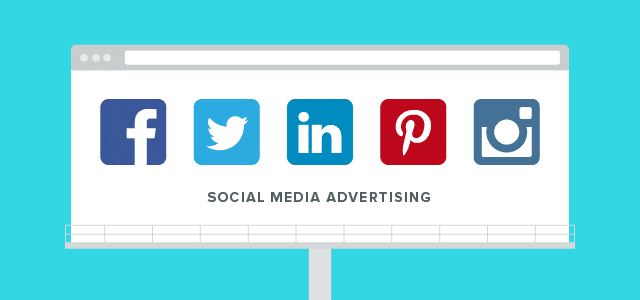
Setting up an Instagram promotion is fairly straightforward and can be done within the app itself, once you’ve switched your account to a business one. Running Instagram ads helps get the word out about your brand and key products/services/events within a specific city. This is important – rather than drawing visitors from a ton of random locations you don’t even service, Instagram ads helps you get the right eyeballs to succeed as a brand.
2. Understand Timely Posting
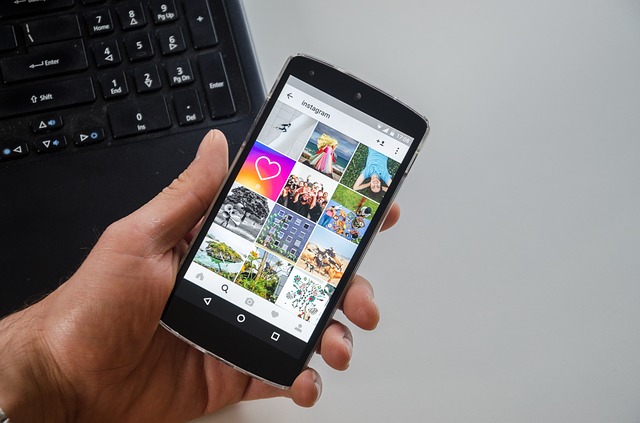
Make sure you are active enough on Instagram to attract your audience – remember, you have to be social on social media! However, too much posting can also downplay on your marketing tactics by overwhelming your audience – it looks spammy. Use the Instagram analytics tools called Insights to track when your followers are most active and publish posts accordingly. However, limit it to 1-2 posts per day so your engagement is healthy and not off-putting. Plan out your content calendar to contain high-res photos, videos, graphics and more. And, definitely make the most of Instagram’s story feature (you can later save these as highlights to leave a solid first impression).
Pro Tip – Make sure you actually reply to comments and DMs!
3. Heighten Customer Interest With Product Teasers

Since Instagram is perfect platform to advertise your products, you can urge people to explore your brand via discounts and engagement activities like contests and user-generated content submissions, which will create tons of interest. According to Sprout Social, more than 60% consumers need to see something 2-4 times on social media, before they make a purchase. Keep this in mind and gently push, but without being pushy.
4. Partner With Influencers For A Greater Visibility
Influencers are the Instagram stars who have a massive following wield an influence over a sizeable target audience. 94% marketers found influencers helpful for their brands. And, 82% consumers indicated they follow the recommendations of micro-influencers, too. Identify which influencers are relevant to your products or services and collaborate with them. This guarantees a wider reach and high engagement rate in a market you wouldn’t be able to penetrate easily, elsewise.
5. Hashtags Are Important
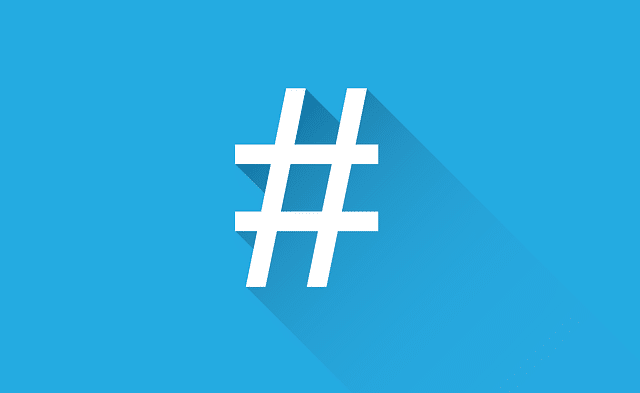
70% of Instagram hashtags are branded. Customers use your branded hashtags to post user-generated content and it is easier for someone to monitor your brand through searching for one consistent keyword. However, it is also important to use geo-specific hashtags, as well, so the right audience discovers your business. Using overly-generic hashtags might get you more likes, but it is quality, not quantity that matters.
Instagram is a great tool for marketing, analyzing your followers and creating instant brand engagement. We hope that these 5 tips will help you improve your Instagram campaigns. If you need any help, contact us right here.
Sources –
> www.quicksprout.com/instagram-marketing-strategy/
> https://neilpatel.com/blog/instagram-marketing-tips/
> www.entrepreneur.com/article/280964
> www.falcon.io/insights-hub/topics/social-media-strategy/21-tips-increase-instagram-engagement/
> https://blog.hootsuite.com/instagram-statistics/ -
Jul 17 2019 Check Out These 5 Social Media Campaigns For Inspiration
Social media has a very powerful impact on audiences – it helps them decide which brand to stick to out of a variety of options available in the market. According to experts, 49% of millennials and 85% of Gen Z use social media as a tool to check products to make sure they get their money’s worth. As a result, social media campaigns can be looked at as a kind of digital persuasion subtly played by companies on the minds of buyers – it occupies a dominant part of a buyer’s journey. Some brands have truly mastered this craft with tasteful ideas that are unique. Here are five of our favorite social media campaigns –
Campaign 1 – Starbucks’ Unicorn Frappuccino

As a manufacturing scarcity strategy, Starbucks introduced an addictive purple and pink beverage for a one-week period in April 2017. It had a clean sweep, especially amongst millennials who grabbed the offer just to overcome FOMO and Instagram this pretty brew. The Unicorn Frappuccino and its hashtag generated approximately 1,55,000 Instagram posts. Isn’t that a viral sensation?
Campaign 2 – Charmin’s Sit Or Squat App
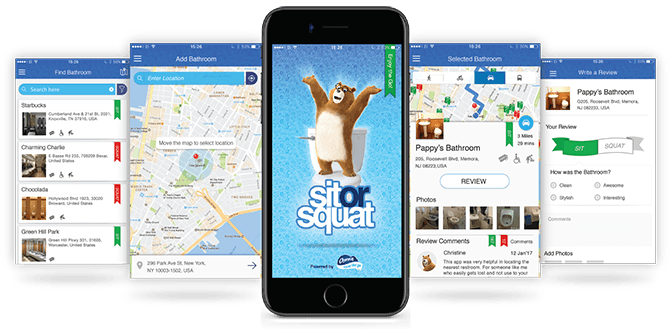
Known for a ton of wit across all of its campaigns, Charmin’s literal toilet seat humor has left consumers in splits for many years. In 2017, they rolled out a rather helpful campaign called Sit Or Squat to help their customers check how clean (sit) / unclean (squat) local toilets are. This interactive campaign addressed an actual issue consumers face – dirty toilets – which drew a lot of attention and appreciation.
Campaign 3 – IHOP:IHOB

A rather odd social media campaign, The International House Of Pancakes switched its “P” with a “B” and became IHOb – the International House Of Burgers – for short span of time in 2008. They acted craftily and asked their audience to guess what “B” stood for. 330,000 users wrecked their minds and responded with wild guesses. Finally, when the ice was broken and the new name was revealed by the company, their tweet drew 15,000 retweets, not to mention that burger sales quadrupled!
Campaign 4 – Dove’s #RealBeauty
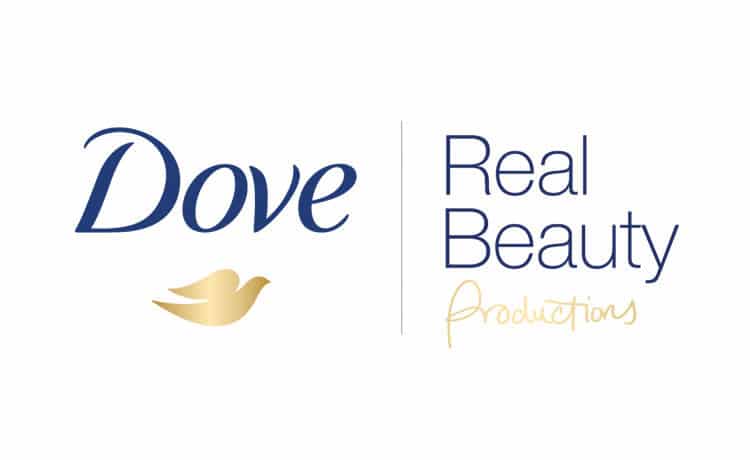
Dove carefully created a holistic social media campaign that tapped into Facebook, Twitter, Instagram and YouTube to emphasize self-love and self-esteem, which has a strong and positive emotional connect amongst its female user-base that anyhow felt underrepresented in advertising that features retouched images of unnatural “beauty” standards. Hashtag campaigns, including #RealBeauty, #NoLiesNeeded, and #SpeakBeautiful, encouraged users to trust and nourish their inner beauty. Additionally, Dove vowed to stop retouching images. AdAge judges unanimously named this campaign as one of the Top 100 21st century campaigns – quite impressive!
Campaign 5 – H&M’s Nano-Influencer Tie-Ups

H&M is definitely a fashion brand that has expanded to many corners of the globe. While most brands leverage influencers and micro-influencers, H&M tied up with NANO-influencers in 2018 to drive consumer engagement substantially. In fact, they gained 294.1 engagements per mention through this tactic, which is amazing in an ultra competitive market.
Social media campaigning can create an enormous shift in both your business as well as your user base’s mindset. We hope these five super successful campaigns inspire you to take the plunge into planning an offbeat social media campaign, too. If you need help, don’t hesitate to get in touch with our team right here.
Sources –
> https://coschedule.com/blog/social-media-campaign-examples/
> https://blog.hootsuite.com/social-media-campaign-strategy/
> www.talkwalker.com/blog/best-social-media-campaigns
> www.brafton.com/blog/social-media/3-brands-with-the-best-social-media-campaigns-in-2016/ -
Jul 15 2019 Don’t Miss These 5 Tips For Improved Social Media Analytics
If you have clear goals for your brand’s social media, it is important to measure campaign success – we call this process social media analytics. One of the best ways to conduct social media analytics in an organized manner is through an Excel spreadsheet – it will enable you to share your findings with your team easily, make real-time edits and convert data into graphs and bar charts quickly. So, what are we waiting for? Let’s take a look at 5 top notch tips to help you assess your social media analytics better! –
Tip 1 – Know Which Social Media Metrics to Measure

In order to measure social media campaign success, you first need to determine which numbers are important to scrutinize – Sales? Site visits? Downloads? Comments? Likes? Tags? DMs? Referrals? UGC? What numbers reflect success? What numbers are average? What numbers are a major red flat? Statistics reveal that conversion rates and engagement are the top 2 metrics to consider, with the former being at 36% and the latter at 35%.
Tip 2 – Identify Changes in Audience Behaviour by Examining Follower Growth

The best way to engage several potential customers and increase traffic is by having a good number of real social media followers. Input the follower count per platform into your Excel sheet so you can track growth every month.
Pro Tip – Cyfe is a popular social media dashboard tool, which helps track and monitor social media data to measure success of various social activities.
Tip 3 – Monitor Brand Engagement Closely

Your followers and impressions are only of use if you get enough engagement out of it. Comments, re-pins and retweets affirm the fact that the content you are sharing is of interest to your followers. Input the number of posts per month by category (i.e. video, contest, JPG, testimonial, blog link, infographic, etc.) and the total number of comments / likes / shares / DMs. Doing so will allow you to find out what sort of content is drawing the best engagement amongst your follower base, so you can plan better editorial content.
Pro Tip – Consider also tracking your competition’s social media performance side-by-side, too, so you know where you really stand in comparison.
Tip 4 – Spot Reach-Related Irregularities by Looking at Impressions

The number of individuals who see your social media updates regularly is collectively known as impressions. Top social networks have such built-in analytics. Record all the impressions in your spreadsheet at set intervals, and also keep a note of each period’s posting frequency. Look for spikes and try to identify what caused it to occur.
Tip 5 – Review Traffic and Clicks Closely
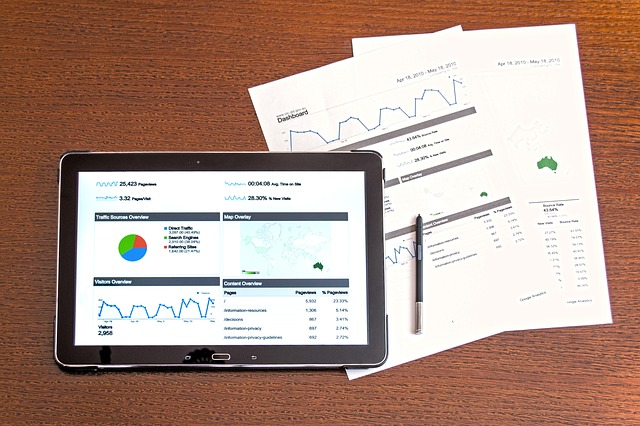
Since clicks influence Web traffic immensely (and, sales, if you’re an e-commerce portal), it is an important metric to observe. Not all clicks result in traffic; but if there is a massive difference between them, it clearly indicates that something is wrong with your site – most probably the loading time. Note the referred traffic on each of your social networks on the excel spreadsheet for better analysis of platforms that are performing well and platforms that aren’t adding any value.
It is also important to pay attention to the sort of audience profile you’re drawing – if your ideal customer base is women between the ages of 30-40, and your analytics reflects traffic of men between the ages of 50-60, clearly there is an issue that needs to be addressed.
We hope these five pointers helps you analyse your social media performance more thoroughly so you can improve future campaigns, accordingly! Make sure you input all the data above accurately. And, if you need any expert help with social media strategy, auditing and analytics, feel free to contact our team right here.
Sources –
> www.socialmediaexaminer.com/10-metrics-to-track-analyzing-social-media-marketing/
> https://blog.hootsuite.com/social-media-analytics/
> www.socialmediaexaminer.com/5-ways-to-analyze-social-media-marketing-performance/
> https://themanifest.com/social-media/how-track-and-understand-social-media-analytics -
Jul 05 2019 How To Have A Smooth Working Relationship With Your Design Team
If visual content is 40x more likely to get shared on social media platforms, which is what research indicates, then the importance of a design team cannot be emphasized enough! And, yet, nearly every brand has their design team horror stories to tell. Here are 6 tips to help you maintain a smooth working relationship with your graphic designers, whether it be an agency or a freelancer.
1. Value Good Design

The first step for a healthy professional relationship with your design team is to understand the value it carries. This means you should incorporate design from the strategy stage itself, not as an after-thought. It also means knowing how to be reasonable, both in terms of remuneration offered, variations requested, revisions solicited and turnaround time expected. This also means you shouldn’t ask for source files to “edit” on your own, because that’s usually offensive to most designers (you probably don’t know have the software or know how to manipulate files anyhow!).
2. Consider A Bespoke Working System

If you require creatives in a set turnaround time at fixed intervals, you may want to consider putting your design team and/or freelance designer on a fixed hours work-from-home retainer, where they allocate a certain number of hours on certain days to be on standby for artwork and/or revisions needed. Many agencies complain that they don’t receive work “fast enough” from designers – this system eliminates this issue altogether.
3. Communicate Openly

Open communication is THE most essential ingredient in any successful relationship, including professional ones, especially if you’re hoping to build a long-term one with your designer (which you should!). Ask them for their inputs about design strategy based on THEIR experience and expertise. Offer then specific feedback, rather than being vague when you’re unhappy with something they turn in. Figure out a system for workflow that meets the needs of both parties. It’ll save you a lot of grief.
4. Add An In-Person Element

When you are working with design teams and/or freelancers who are based out of other cities, having a quarterly or bi-annual in-person working session where you fly everyone down – designers, copywriters, marketing team, managers, etc. – into one location to brainstorm new ideas, discuss design trends, social media trends, new tools and technology, latest stats surrounding what has/hasn’t worked for your brand, etc. In-person energy can move a lot of mountains and bring about super creative ideas that wouldn’t be possible when everyone is scattered and never interacts face-to-face.
5. Be VERY Thorough

One of the easiest ways to run into huge trouble with your design team is to not be specific and detailed with them from the beginning. Offer them the following at the start of the project to minimize disappointment and endless back-and-forth –
* Mood board of references you like
* Brand book that specifies font choices, font sizes, brand primary colors, secondary/accent colors allowed, aesthetics, layout
* Reference folder of logo(s) + evergreen material on-file
* Editorial calendar of which piece is going out when so you can mutually back-track and set deadlines for draft 1, draft 2, final version(s)
* Detailed creative brief, including guidelines of information that must always be included (i.e. logo, SM handles, Website URL, email / phone, etc.) and layouts/dimensions (i.e. an Instagram post has very different dimensions from a FB cover pic)Do not, we repeat, DO NOT send your designer/team elements in bits and pieces – make sure they are provided everything they need in one go. Act professionally so you can set the tone for what you also expect in return.
6. Ask Questions Before Signing On

Although this might seem basic, you’d be surprised how often people ignore the importance of asking the right questions at the hiring stage. Check references and work samples. And, observe if you have any working chemistry with one another – if you can’t stand your designer in the interview process, chances are you’re not going to find them very pleasant later on, either! Offering a paid trial project is also a great way to test the waters before signing on for a long-term association.
We hope these 6 tips help you establish a healthy relationship with your design team that yields amazing visual content! If you need any help, reach out to us right here.
Sources –
> https://medium.com/designing-atlassian/7-tips-to-create-high-functioning-design-teams-part-1-1e0c9ea44f0d
> https://blog.percolate.com/2015/05/finding-a-creative-agency/
> www.huffpost.com/entry/8-best-tips-for-worki_b_5473608
> www.canva.com/learn/10-things-never-say-graphic-designer-probably/ -
Jun 26 2019 How To Do A Good SM Audit
With social media tools and strategies evolving day-by-day, what might have been working for your brand a few months ago could prove utterly useless today. To complicate matters further, chances are your competitors – who have bigger budgets – are probably ahead of the game, which brings us to our main point: you must audit your company’s social media regularly. A social media audit will not only help you monitor what your competition is doing right, it’ll also help you evaluate what you need to initiate, eliminate and optimize. So, let’s walk you through six steps to conduct a quick social media audit –
1. Create A Spreadsheet

Open up a new spreadsheet in Google Docs that is accessible to only key members of your team. Create a tab for each month, and add the following sections in each one of them –
a) social media handle name
b) social media handle URL
c) login info
d) names of people with access to login info
e) number of followers
f) number of comments
g) number of likes
h) number of shares
i) number of DMs
j) number of posts
k) metrics (i.e. Web traffic)
l) top 5 performing posts
m) insights / analytics
n) ad campaigns
o) other notes
p) competitorsOnce you’re done creating these sections, begin filling them out.
2. Check Your Basics

At the same time you’re working on step #1, also double check if all of your social media handles are even up-to-date with the latest information, which could range from bios and URLs to contact information and logos. Most importantly, please do not hesitate to delete any unnecessary accounts. It is better to focus on a handful of relevant platforms than spread yourself thin across any and every space.
3. Review The Data

Once you’ve filled out your spreadsheet’s sections for a few months, you will easily be able to identify the following –
a) are new customers coming in?
b) is Web traffic linked to social media activity?
c) are new followers joining?
d) are old followers leaving?
e) are followers from your target group?
f) are particular posts doing better than others?
g) are ad campaigns offering any impact?
h) are people interacting with your brand?
i) are posts going out consistently?
j) are particular days/timings better for posting?
4. Monitor Your Competition

Monitor the social media handles of at least 2-3 competitors and note down which posts are performing best for them – you might find some interesting information that you can incorporate into your own campaigns, such as content ideas or better hashtags.
5. Revise Your Strategy

Based upon the analysis you draw through answering the above questions from points #3 and #4, spend a few minutes to jot down the following –
* List down immediate goals + metrics to measure success
* List down long-term goals + metrics to measure success
* Build a new editorial calendar that has a specified frequency of posts and a good mix of content buckets that are relevant.
* List down action steps to obtain the necessary images, videos, copy and information to put together content as per your new editorial calendar6. Monitor Progress

Keep monitoring progress with social media strategy modifications every month to pull the plug on low performing campaigns and allocate more time, energy and funds to campaigns that are drawing real results. Remember, social media auditing is not a one time project – this needs to happen on an ongoing basis.
We hope these six steps help you audit your company’s social media thoroughly so you can improve your strategy to meet your end-goals. If you need help with putting together a tailored social media campaign, contact us here.
Sources –
> https://neilpatel.com/blog/social-media-audit/
> www.searchenginejournal.com/social-media-audit/264849/
> www.bigcommerce.com/ecommerce-answers/what-is-a-social-media-audit-how-to-do-it/ -
Jun 24 2019 3 Reasons Automated Emailer Campaigns Are Important
Are you still used to the old school style of sending out emailers manually to each individual on your business’ database? Or, even worse – do you BCC your entire database on one generic email? Well, it is high time to now step up your emailer game with some good ‘ol automation tools. Let’s take a look at three key reasons why! –
1. Maintains Absolute Consistency

Automated drip email campaigns truly allow you to be consistent in nurturing new leads, while simultaneously also retaining older customers/audiences. With automated emailers in place, never risk the occurrence of huge gaps in communication. As a result of ongoing interaction lead nurturing emails provide at different touch-points, they end up receiving an impressive 4-10 times higher response rate than archaic mass email blasts. Furthermore, slow ‘n steady communication generates 50% greater sales-ready leads. Sounds exciting, doesn’t it? In short, automated emails are timely, targeted, systematic and drastically improve any company’s bottom line.
2. Offers True Personalization

According to data from Econsultancy, 93% brands see improved conversion rates that can be linked to personalization. Since automated emails are triggered by actions unique to each particular consumer – i.e. when they browse through your site, when they abandon their cart, when they’ve made a purchase, when their birthday/anniversary is approaching – they offer hyper-personalization, which makes a customer feel special. Sites like Shein, Koovs and Amazon are pros at sending such behavior-triggered automated emails that are relevant to each customer – this can drive up to 18 times more revenue than generic emails, because open rates are 80% higher for drip emails than single-send emailers!
3. Increases Revenue Substantially

Automated emails improve revenue at three different levels –
Firstly, it reduces staffing costs because automation tools have immense scalability. This actually opens up time for your team to focus on other, more important areas, like strategy, marketing and analytics.
Secondly, automated emails reduce the risk of human errors – i.e. writing the wrong name, messing up on spelling, sending the wrong offers – so you’re less likely to lose customers on your database through careless blunders.
Thirdly, and most importantly, automated emails are proven to boost sales. Companies tend to see a 20% boost in sales after using drip campaigns to nurture leads; in fact, nurtured leads make 47% larger purchases (wowza!). You can even up-sell products or cross-sell accessories to increase the overall lifetime value and loyalty of every customer.
So, the next time your team sits down for a marketing strategy meeting, put switching to automated emailers at the top of your agenda. Whether you want to improve sales, increase downloads or newsletter subscriptions, boost site traffic, obtain more feedback, promote brand loyalty or enhance interactivity/engagement, automated drip email campaigns are the perfect way to lead people in your database from one step to the other until they take the action(s) you desire.
Do you need help with setting up automated email campaigns that generate concrete results? Contact our team right here, and we’ll get you started in no time!
Sources –
> www.pure360.com/10-benefits-of-marketing-automation/
> www.theleverageway.com/blog/email-marketing-automation-benefits-business/
> www.digital22.com/insights/benefits-of-having-email-automation-workflows
> www.pinpointe.com/blog/do-drip-campaigns-really-work

